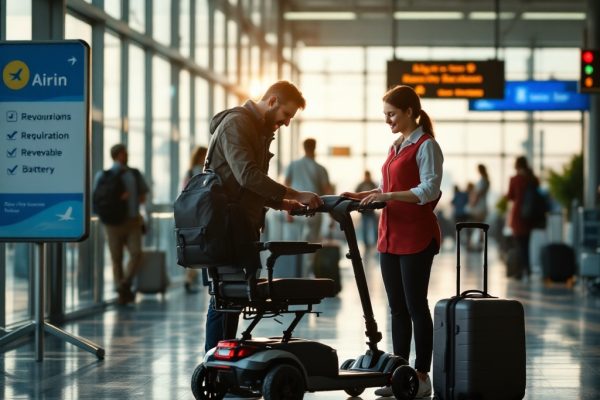Air Travel after Hip Replacement: Recommendaions and Cautions
Planning a trip after hip replacement surgery? Air travel requires careful preparation to ensure a safe and comfortable journey. Deep vein thrombosis (DVT) and pulmonary embolism are serious risks, especially on long-haul flights. This guide provides essential advice, from pre-flight consultations with your surgeon to in-flight exercises and post-flight recovery tips. Learn how to minimize risks, navigate airport security, and enjoy a smooth travel experience after your hip replacement. Read on to prepare for your next adventure!
Important information

- Consult your surgeon before booking any flights, especially long-haul flights (over 4 hours), which are generally discouraged for at least three months after surgery due to the increased risk of blood clots (DVT).
- Reduce the risk of blood clots during the flight by wearing compression stockings, staying hydrated, walking around the cabin hourly, and doing simple leg exercises.
- Book a non-stop flight and an aisle seat to allow for easier movement and restroom access.
- Inform the airline and TSA about your recent hip replacement surgery to request assistance and ensure a smooth security process. A doctor’s note is optional for TSA.
- Pack light, including essentials like comfortable clothing, compression stockings, medications, and medical documents in your carry-on bag.
Preparing for Safe and Comfortable Air Travel
Planning ahead is key for air travel after hip surgery. Consult your surgeon before booking a flight to get their approval and specific recommendations. Whenever possible, opt for a non-stop flight and select an aisle seat for easier movement and restroom access. Pack light but smart, including comfortable clothing and compression stockings. Keep all essential medications in your carry-on bag. Inform the airline about your recent surgery; they can provide valuable assistance. Here’s a step-by-step guide to help you prepare:
Consult your surgeon. Get their approval and specific recommendations before booking your flight.
Choose a non-stop flight. This will minimize transfers and potential discomfort.
Select an aisle seat. This will allow for easier movement and access to the restroom.
Pack light but smart. Include comfortable clothing and compression stockings.
Keep essential medications in your carry-on. Ensure you have easy access to them during the flight.
Inform the airline. Let them know about your recent surgery so they can provide assistance.
Surgeons’ Advice on Flying Post-Surgery
After surgery, postpone air travel to allow for initial healing and reduce the risk of blood clots. Consult your surgeon for personalized advice, especially if you experience persistent swelling or pain, which could indicate slower healing. For example, after hip replacement surgery, it’s generally recommended to wait at least six weeks before flying. During any flight, take precautions to further mitigate clot risks: stay hydrated, walk around frequently, and wear compression stockings. An aisle seat can make moving around more convenient.
Travel Safety and Security Considerations
Traveling with a hip replacement? Here’s how to navigate airport security smoothly:
Inform the TSA officer. Letting the officer know about your hip replacement can help avoid potential issues and streamline the screening process.
Request alternative screening if needed. If standard procedures aren’t suitable for your condition, don’t hesitate to ask for an alternative screening method.
Carry a doctor’s note (optional). While not mandatory, a doctor’s note explaining your condition might be helpful during the screening process.
Travel Precautions
Taking travel precautions is crucial for preventing complications like dislocation. Maintain good posture during your journey, and avoid twisting or sudden movements that could stress your new joint.
Additional Tips
- Arrive at the airport with extra time to accommodate the screening process.
- Consider wearing loose, comfortable clothing that allows for easy movement.
- Pack any necessary medications in your carry-on bag.










